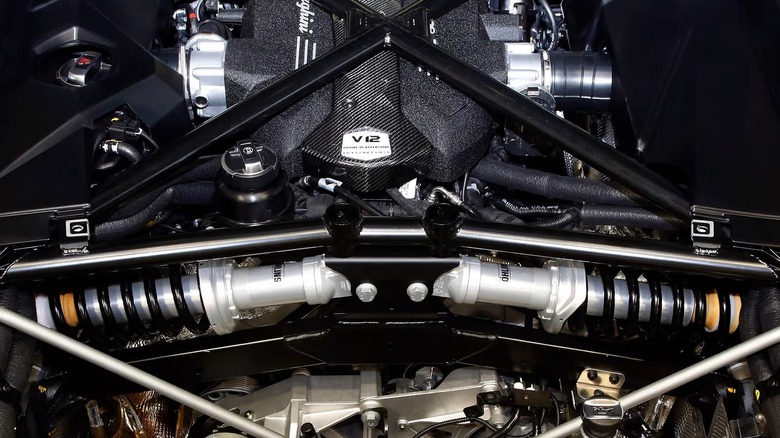Pushrod Suspension Explained: How It Works, And What Makes It So Special
The Lamborghini Aventador became the first mass-produced car to feature a racing-inspired pushrod suspension design when it debuted in 2011. A pushrod or pull-rod suspension is unlike the outboard suspension systems you'll find in a standard road car or SUV. The pushrod design incorporates a double wishbone setup with a few elements of a McPherson strut suspension. It is all part of an inboard suspension system popularized in F1 racing.
The late, great Colin Chapman and the Lotus F1 racing team have fiddled with inboard suspension and pushrod designs since the early 1960s. The inboard suspension design favors aerodynamics and conceals the dampers, springs, torsion bars, anti-roll bars, and other components behind or under the vehicle to improve airflow. In the 1970s, Gordon Murray and Brabham introduced the innovative pull-rod suspension design.
The pushrod and pull-rod systems feature struts across the chassis instead of vertically-oriented shocks and struts in a standard car. The difference between a pushrod and a pull-rod is the orientation and how the rod moves to counteract bumps on the road.
How does pushrod suspension work?
The pushrod suspension in a typical F1 racing car consists of upper and lower wishbones and a suspension rod or torsion spring. The actual pushrod connects the torsion spring to the top of the wheel. A pushrod mounts from a higher point on the chassis to a lower part of the wheel assembly. When the tire goes over a bump, the upward force pushes the pushrod upwards and to the chassis.
But in a pull-rod, it's the other way around— the pull-rod mounts from a lower point on the chassis to a higher part of the wheel assembly. When the wheel encounters a bump, the wheel pulls on the torsion spring instead of pushing. Pushrods and pull-rods allow race car designers to relocate the suspension components closer and lower to the ground, enabling a lower center of gravity to enhance high-speed stability, cornering, and handling while reducing body roll.
Since the suspension components are "hidden" in a pushrod or pull-rod, there's less drag and better downforce. However, pushrods generally have a stiffer ride comfort on public roads and are expensive to produce. But on the racetrack, a pushrod suspension ensures more tire contact to maximize grip.
